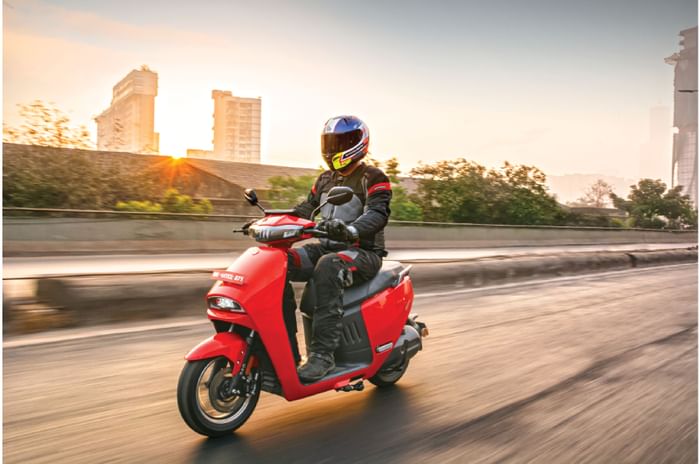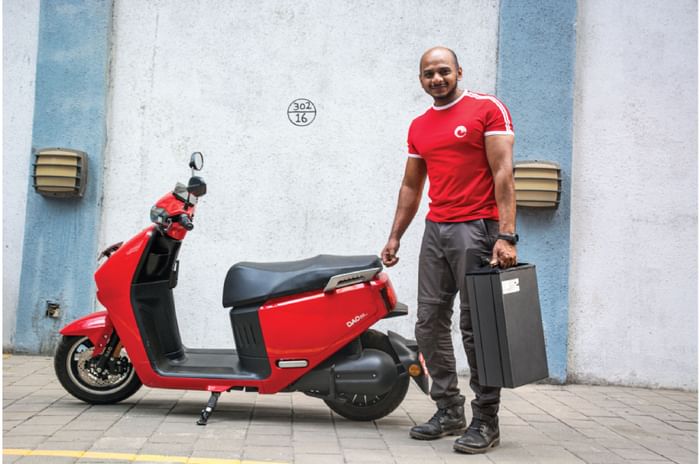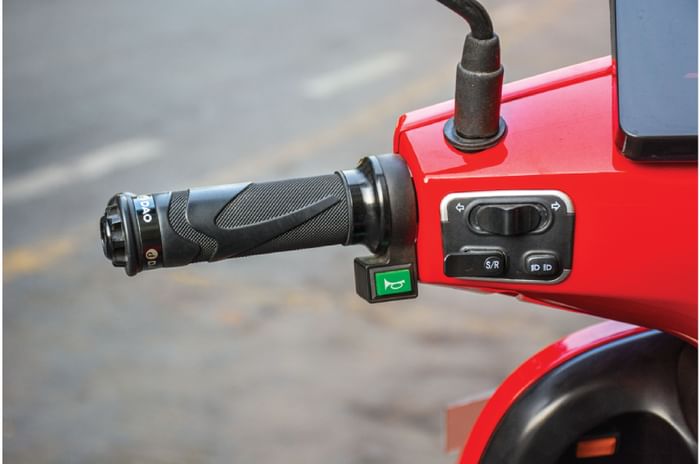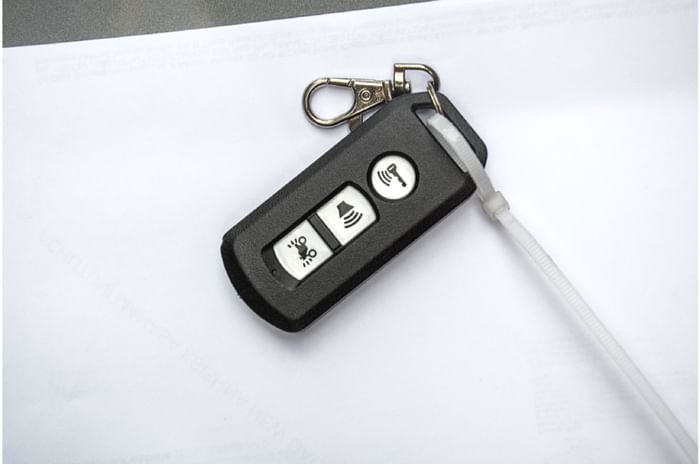Dao Model 703 review, road test
A new EV at the Rs 1 lakh mark. Is it worth considering?
Published on Feb 12, 2023 07:00:00 AM
16,392 Views
Follow us on

Removable battery weighs 25kg and is difficult to move around.

Basic switchgear seems to belong to bikes from a bygone era.

Big display but lack of distance to empty indicator is a glaring omission.
The scooter serves as a decently quick city runabout and keeps pace with traffic. This is true in the case of both, Eco and Sport modes. What was baffling, however, was that there was barely any difference in acceleration between Eco and Sport, as is evident from our test numbers. The performance is par for the course, with the acceleration from 0-40kph taking 6.92sec, and we managed to see an indicated 69kph top speed on the dash in Sport. But things start going south once the state of charge falls below 30 percent. From here on, there’s a notable drop in acceleration and the speed rises slowly. At 25 percent charge, for instance, the scooter’s top speed (in Sport) hovered around 35kph, but try climbing a flyover and the speed drops to 25kph or lower. That puts you in a dangerous situation where you may get rear ended, so it’s best to stick to the extreme left of the road.

The third mode, Power, caps the top speed at 35kph, strangely even slower than Eco mode. The company tells us that this is meant to be a ‘power saving’ mode. It essentially extends battery range to as much as possible. However, with subdued acceleration and such a low speed cap, it was too slow to safely ride in Mumbai, which is why we did our range tests in Eco and Sport.
Like most Chinese origin scooters in the market, the throttle calibration is more like an on/off switch and the motor cuts off the moment you touch the brakes. This prevents you from feathering the brakes, say while making a U-turn. The motor also automatically turns itself off after around 25sec of being at a standstill, which can leave you in a precarious position at traffic lights if you don’t quickly restart it.

However, the biggest bone I have to pick with the scooter is its unreliable battery range. In Eco mode, the scooter covered 69km, while in Sport that figure fell to 64km. These economy numbers are way below the claimed 80-100km range, but that’s still not the main concern. The real issue is that with 17 percent charge on the display, the SoC suddenly fell to 0 percent without warning, leaving me stranded by the road. Luckily, I was close to my office which has a charging point, so I didn’t have to push the scooter for a considerable distance. I got lucky, but it could have been far more inconvenient. While doing the same range test in Eco mode, the scooter suddenly went dead when the display said there was 14 percent left. Clearly, the battery percentage indicator cannot be trusted.
As for the time taken to charge the 2.16kWh LFP battery pack, it took around 4.5 hours. The convenience of a removable battery is welcome for those who can’t set up a charging point at their residence. LFP batteries improve the safety quotient, but the drawback is more weight. The 703’s battery pack weighs a massive 25kg, making it very difficult to haul around on a regular basis.
Copyright (c) Autocar India. All rights reserved.



Comments
Member Login
Personal Details
No comments yet. Be the first to comment.